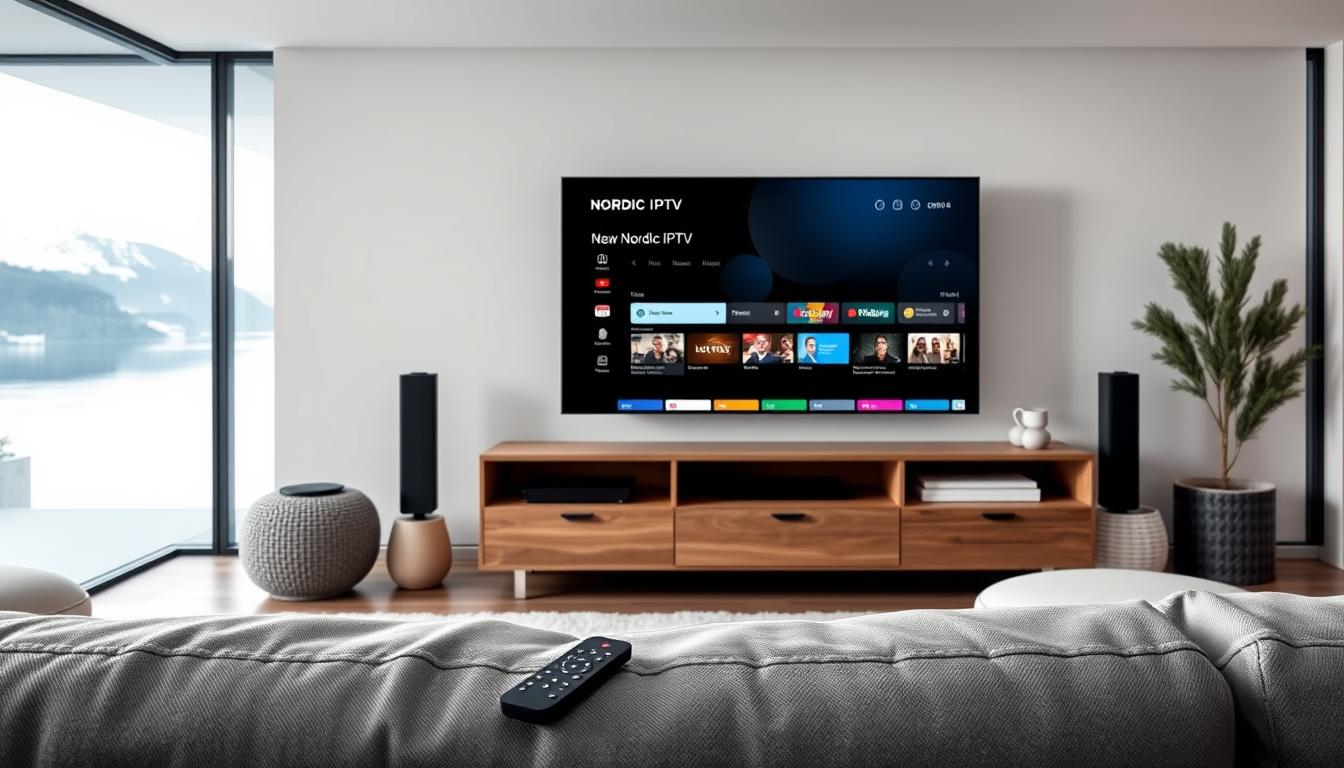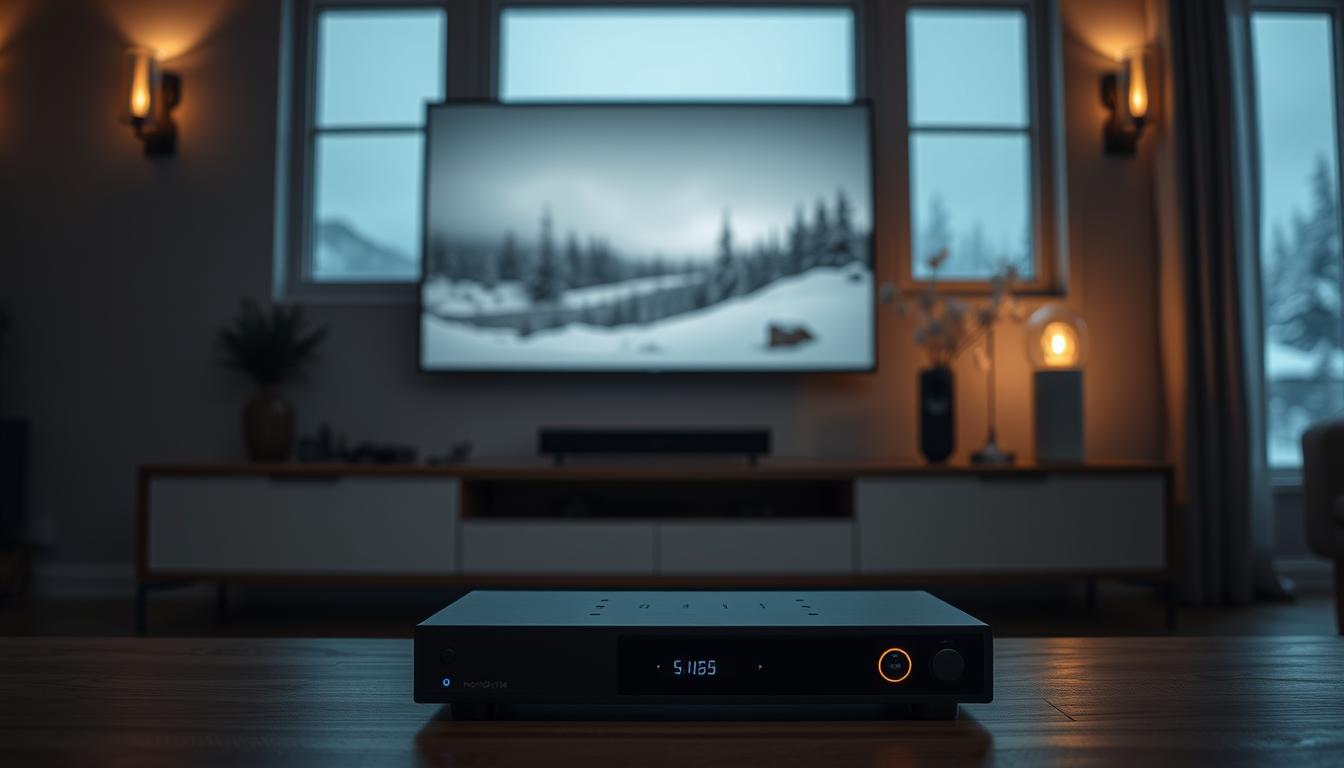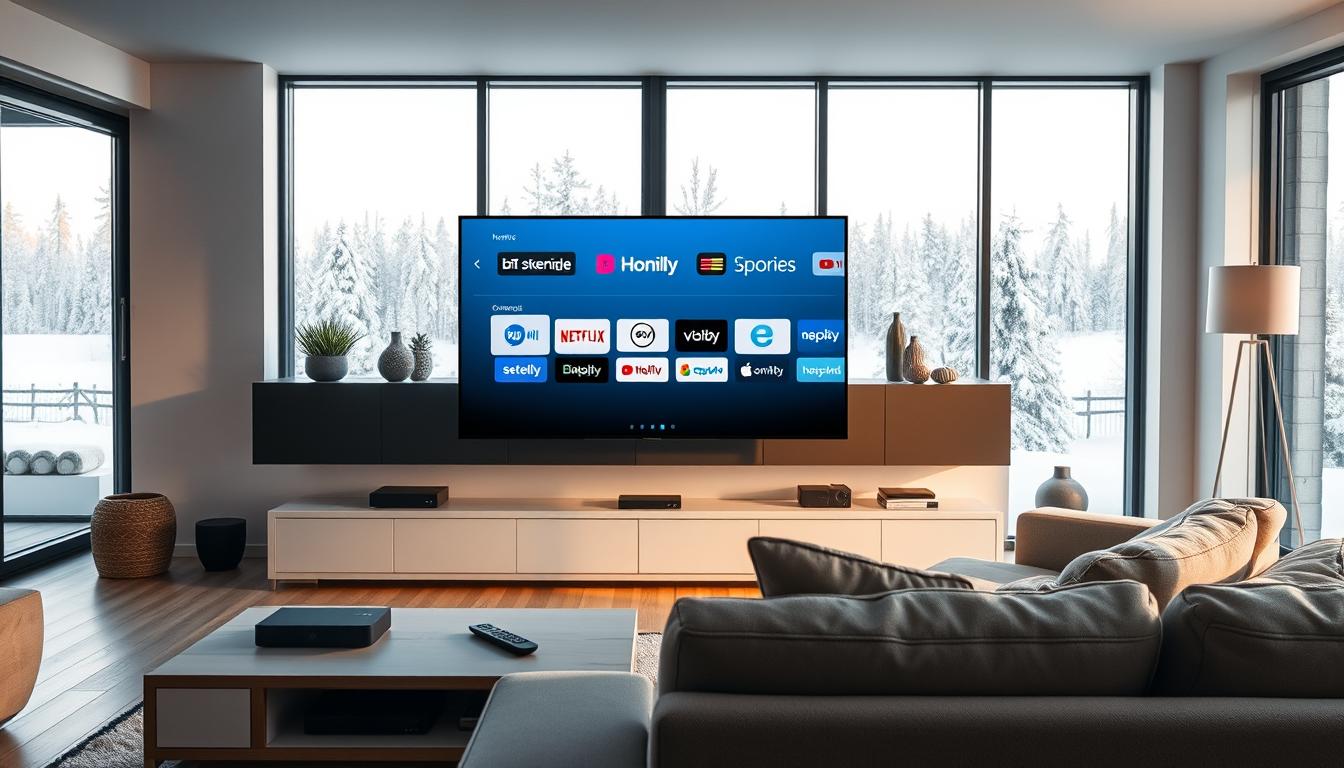How do I troubleshoot buffering issues on Nordic IPTV?
Streaming Nordic IPTV can be frustrating when it keeps buffering. This problem is often due to slow internet and lost data packets. For viewers in Norway, knowing the cause is key.
Users of Nordic IPTV sometimes face streaming issues. But, the good news is that most buffering problems can be fixed with the right steps.
Internet connection is vital for smooth streaming. Even though Norway has fast internet, about 30% of users still face buffering issues.
Key Takeaways
- Internet speed is crucial for good Nordic IPTV streaming
- 45% of buffering problems are due to slow internet
- Home network congestion can lower streaming quality
- Device compatibility is important for stable streaming
- Keeping your network optimized can enhance streaming
Understanding IPTV Buffering Basics
Nordic IPTV streaming uses complex tech that can sometimes cause video buffering. Buffering is key for smooth playback by storing video data before showing it on your screen.
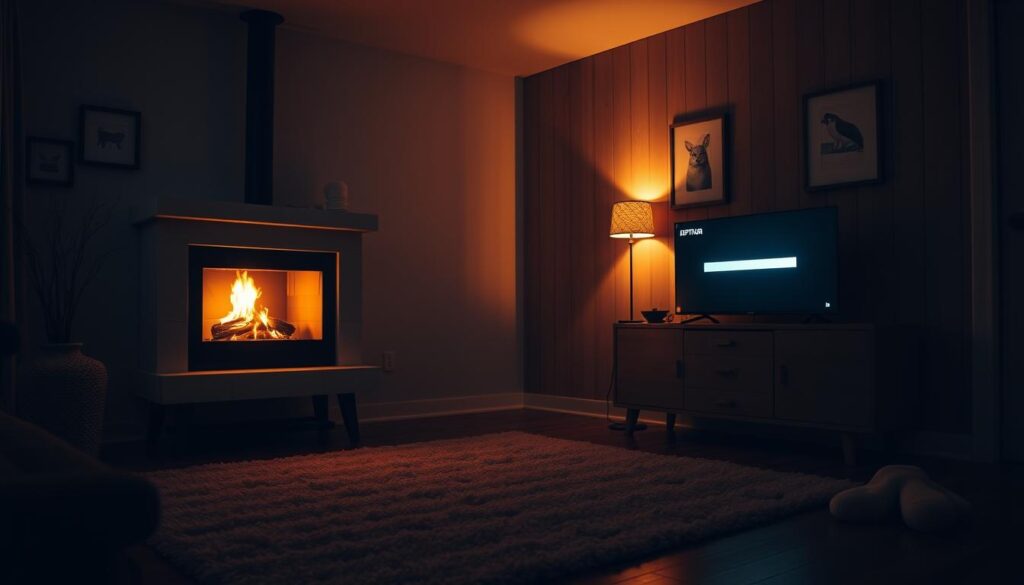
- Internet connection speed
- Server performance
- Device capabilities
- Network congestion
What Causes Video Buffering
Video buffering happens when your device can’t download content fast enough. Nordic IPTV streaming needs steady data transfer for top-notch viewing.
“Buffering is the pause that prevents playback interruption” – Streaming Technology Experts
How Buffering Affects Streaming Quality
Buffering can lower video quality by causing pauses. Slow connections might make images pixelated, cause frequent pauses, and lower stream resolution.
The Role of Memory Buffers in Streaming
Memory buffers are like digital tanks that preload video data for smooth playback. They help manage video buffering causes by storing content before you watch it.
| Buffer Type | Function | Impact on Streaming |
|---|---|---|
| Network Buffer | Stores incoming data packets | Reduces connection interruptions |
| Playback Buffer | Prepares video for smooth display | Minimizes visual stuttering |
Common Causes of Nordic IPTV Buffering
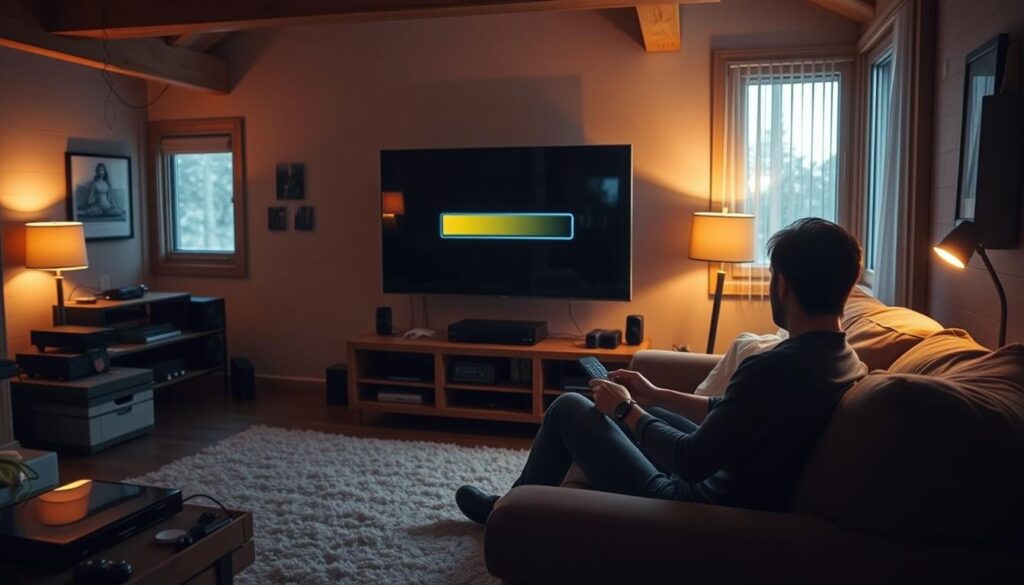
Nordic IPTV buffering can be really frustrating. It stops viewers from enjoying their shows without interruptions. Knowing what causes it helps fix streaming problems fast.
Several key factors contribute to nordic IPTV buffering causes:
- Internet Connection Speed: Not enough bandwidth is the main problem. For HD streaming, you need at least 5.0 Megabits per second.
- Home Network Configuration: Too many devices on one network can lower streaming quality.
- Device Performance: If your device’s CPU is too busy, it can stop streaming.
- Server-Side Problems: Issues with the provider’s servers can also cause buffering.
For the best IPTV experience, you need a download speed of 25-150 Mbps. Wired connections usually stream better than Wi-Fi.
A reliable IPTV service should deliver smooth, buffer-free streaming even during peak viewing hours.
Nordic IPTV users can reduce buffering by:
- Checking your internet speed regularly
- Using fewer devices at once
- Upgrading your internet plan if needed
- Picking high-quality IPTV service providers
By tackling these causes, viewers can greatly improve their streaming. They can enjoy their shows without any interruptions.
Internet Speed Requirements for Smooth Streaming
Streaming Nordic IPTV needs a good internet connection. Your viewing quality depends on your bandwidth and speed. Norwegian viewers look for stable streaming when choosing IPTV services.
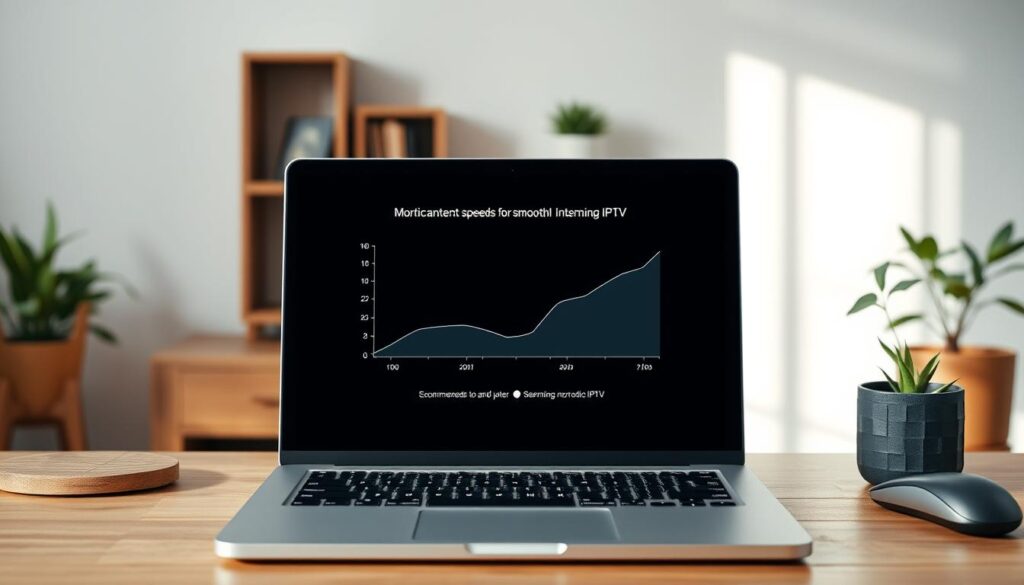
Minimum Bandwidth Requirements
Different streaming qualities need specific internet speeds:
- Standard Definition (SD): Minimum 5 Mbps
- High Definition (HD): Minimum 25 Mbps
- 4K Ultra HD: Recommended 50-100 Mbps
Testing Your Internet Connection
Checking your nordic iptv internet speed is key for good streaming. Many online speed test sites can check your bandwidth. Here’s what to do:
- Use trusted speed testing websites
- Test speeds at different times
- Compare with your internet provider’s speeds
“A stable internet connection is the backbone of quality IPTV streaming” – Nordic Streaming Experts
Peak Hours Impact on Streaming
Internet congestion in peak hours can harm streaming quality. Evening hours often have more network traffic, cutting bandwidth. Nordic IPTV users should plan their streaming around these times.
Network Configuration Issues
Getting your nordic iptv network right is key for smooth streaming. Too many devices on one wireless router can slow things down. This can mess up your IPTV watching.
Network problems can really hurt your streaming quality. Knowing what might go wrong helps make a better home network for Nordic IPTV.
- Identify potential network bottlenecks
- Optimize router settings for streaming
- Manage device bandwidth allocation
- Reduce network congestion
Important network settings for IPTV streaming include:
- Bandwidth distribution across connected devices
- Router processing capabilities
- Wireless signal strength
- Network interference sources
About 30% of streaming issues come from network problems. These can be fixed with the right setup and tweaks.
A well-configured network is the foundation of smooth IPTV streaming experiences.
Managing your network well means better IPTV service. By tackling network issues, you can make your streaming much better.
Router Settings and Optimization
Optimizing your router settings is key for smooth Nordic IPTV streaming. The right setup can cut down buffering and boost streaming quality.
Choosing the right router and setting it up can greatly improve your streaming. Routers with advanced features handle IPTV traffic better.
Best Router Settings for IPTV
For nordic iptv router settings, follow these important tips:
- Go for a dual-band router that supports 5GHz networks
- Enable automatic firmware updates
- Set the best wireless channel to cut down on interference
- Use the latest WiFi standards like 802.11ac
QoS Configuration Tips
QoS configuration is vital for streaming traffic. Quality of Service (QoS) helps manage bandwidth well:
- Get into your router’s admin panel
- Find the QoS settings
- Make streaming and video traffic a priority
- Give IPTV devices more bandwidth
“Proper QoS configuration can reduce buffering by up to 70%”
Router Placement Considerations
Where you place your router affects signal strength and streaming quality. Place your router:
- In the center of your home
- Away from metal objects
- On a higher spot
- Clear of any signal blockers
By using these nordic iptv router settings and QoS tips, you can greatly improve your streaming.
Hardware and Device Compatibility
Choosing the right hardware is key for a great Nordic IPTV experience. Not all devices are the same when it comes to streaming. Specialized IPTV devices can really improve your viewing.
Nordic IPTV works with many devices, giving users lots of choices. The top picks include:
- Dedicated IPTV set-top boxes
- Smart TVs with built-in IPTV support
- Android TV devices
- High-performance streaming devices
Pro tip: Pick a device your Nordic IPTV provider recommends for the best streaming and features.
“The right device can transform your IPTV experience from frustrating to fantastic!” – Nordic Streaming Expert
When looking at devices, remember these important points:
- Processor speed and RAM
- Operating system support
- Network connectivity options
- Storage for catch-up TV
Norwegian IPTV providers like MyIPTV Now have lots of channels. They offer over 3,000 channels in HD and 4K. Prices are low, from 199 NOK to 280 NOK a month.
Prices for IPTV set-top boxes vary from 500 NOK to 1,500 NOK. This lets you find something that fits your budget and needs. Make sure your device supports the latest streaming tech for the best experience.
Server-Side Problems and Solutions
Nordic IPTV services face complex server-side challenges that affect streaming quality. Understanding these issues helps users deal with disruptions and set realistic streaming expectations.
Provider Server Overload Dynamics
Nordic IPTV server issues often happen during peak viewing times. When too many streaming requests hit the servers, users face a lot of buffering and interruptions. Each IPTV stream needs about 8 Mbit of bandwidth, making server management key.
- Server load goes up during popular show times
- Many users at once can overload the servers
- Not enough bandwidth can cause streaming problems
Peak Viewing Time Management
Managing peak viewing times means smart server use. Providers use different methods to keep service quality up during busy times.
| Time Period | User Load | Potential Impact |
|---|---|---|
| Evening (6-10 PM) | Highest | Potential Buffering |
| Late Night (10 PM-2 AM) | Moderate | Minimal Disruption |
| Daytime | Low | Optimal Performance |
Server Maintenance Considerations
Regular server upkeep is vital to avoid long-term streaming problems. Providers usually do updates when there are fewer users to cause less trouble.
Choosing providers with high uptime and strong infrastructure can help users avoid server issues. Proactive communication from IPTV services about maintenance helps users know what to expect.
Quick Fixes for Common Buffer Issues
Dealing with Nordic IPTV buffering can be really annoying. But, there are some easy fixes to get your streaming back on track. First, try restarting your router and IPTV device. This often fixes temporary connection problems.
Make sure your internet speed is at least 5.0 Mbps for streaming. For the best experience, aim for 25 Mbps. This ensures your streaming is smooth and uninterrupted.
Improving your network setup can also help. Try using a wired Ethernet connection for better stability. If you must use Wi-Fi, place your router in the center of your home. This reduces interference from other devices.
Using a premium VPN can also make a big difference. About 75% of users see less buffering when they switch from free VPNs to paid ones.
For more advanced solutions, tweak your router’s Quality of Service (QoS) settings. This prioritizes streaming traffic. Also, check your internet speed during busy hours, like evenings, when buffering is more common.
If problems persist, think about upgrading your internet plan. Or, use EoP adapters to improve your IPTV box’s internet connection. These steps can greatly enhance your streaming experience.
Finally, look into adaptive bitrate streaming. This technology adjusts video quality based on your internet speed. By implementing these quick fixes, you can enjoy smoother Nordic IPTV streaming without interruptions.




